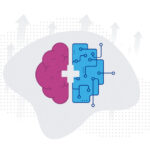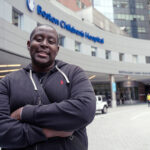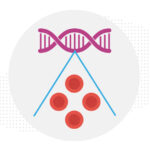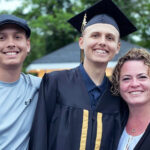The space between heartache and happiness: Two sons with adrenoleukodystrophy
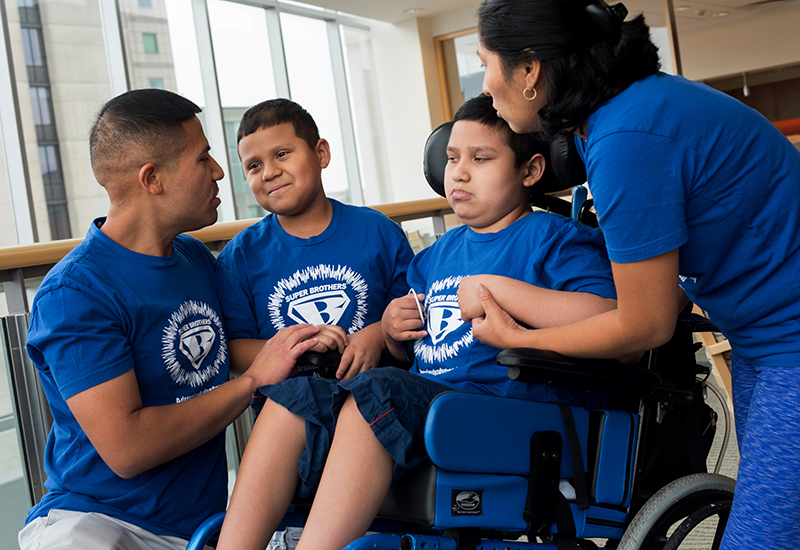
When Paul and Liliana Rojas talk about their life, they describe it in one of two ways — the way it was before their sons, 10-year-old Brandon and 7-year-old Brian, were diagnosed with ALD, and the way it is after. Their story is one of heartbreak — but also hope, in the form of a new clinical trial.
Learn more about the results of the clinical trial, recently published in the New England Journal of Medicine, that halted the progression of Brian’s ALD.
ALD is short for adrenoleukodystrophy, a debilitating brain disease that simply goes by its initials.
“Life before ALD was pure happiness without worries,” Paul says. “It was anything a parent could wish for — two boys with no medical issues, active, athletic, the healthiest boys ever.”
The two were inseparable. They played sports together in their hometown of Dover Plains, New York; idolized superheroes; danced like crazy; and dreamed of someday inventing video games. Brian was Brandon’s shadow.
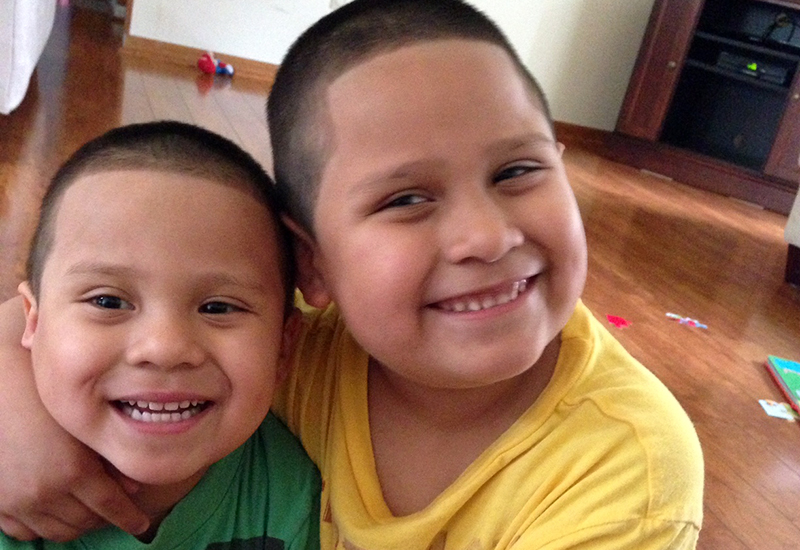
The first signs of ALD
It all began with a phone call from Brandon’s school in May of 2014.
“They asked, ‘Is everything OK at home?’” explains Paul.
Brandon, then a 6-year-old first-grader who excelled at reading and math, was showing signs of fatigue and an inability to focus.
“Nothing is going on, everything is good. I am good,” Brandon told his mom and dad.
“Like any parent, you let things play out,” Paul says. “Little did we know.”
A month later, the Rojases received another call: “He’s having difficulty with basic math and reading comprehension.”
“They were concerned,” recalls Paul. “And so were we.”
At that point, Brandon was displaying only one neurological symptom — slight drooling. “We assumed it was because he had lost his two front teeth,” Liliana explains.
However, the moment Brandon walked into the pediatrician’s office, the doctor noticed him leaning to the left side. “She wasn’t too concerned,” says Paul. “But to cover all the bases, we were referred to a pediatric neurologist.”
The neurologist noted the same left-side weakness. Brain scans were ordered: an MRI and an electroencephalogram (EEG). Weeks later, Paul and Liliana waited patiently for results in Brandon’s hospital room at the Montefiore Medical Center in Bronx, New York. They already knew the EEG was abnormal, a slow frequency for a child his age, but the MRI would reveal whether there was damage to the brain tissue.
“The doctor came in and said, ‘Mr. and Mrs. Rojas, we need to speak to you,’” recalls Paul. “When they say something like that, when they walk you out of that room, you know something is wrong.”
Paul and Liliana sat side by side in a conference room flanked by four doctors who shared Brandon’s presumed diagnosis — adrenoleukodystrophy.
“What is that?” Liliana asked. “How do you even say that word?”
The doctors explained how adrenoleukodystrophy is a genetic mutation on the X chromosome, passed from mother to son; how it causes a buildup of very long chain fatty acids that destroy the protective sheath around nerve cells, responsible for thought and muscle control; how it primarily affects young boys between the ages of 4 and 10, leading to permanent disability or death within four to eight years. Then, they asked, “Do you have any other children?”
“It was a nightmare,” Paul says. “In one sit-down, they give us a diagnosis on Brandon, and then we learn it’s possible Brian has the same thing.”
The following day, the Rojases took the train to Mount Sinai Hospital in New York City, where Brandon’s blood was drawn and scrutinized to check for high levels of very long chain fatty acids and for genetic testing to confirm the diagnosis.
Paul and Liliana knew Brian also had to be tested, but it was too much too soon. “We wanted to confirm with Brandon first,” Liliana explains.
Three weeks later, they learned the worst. Brandon had ALD.
“We talked to him about what was going on with his body, about the disease,” Paul says. “We told him, ‘Mom, Dad and the doctors are all working together to fight it, not to worry, we will always be by your side.’”
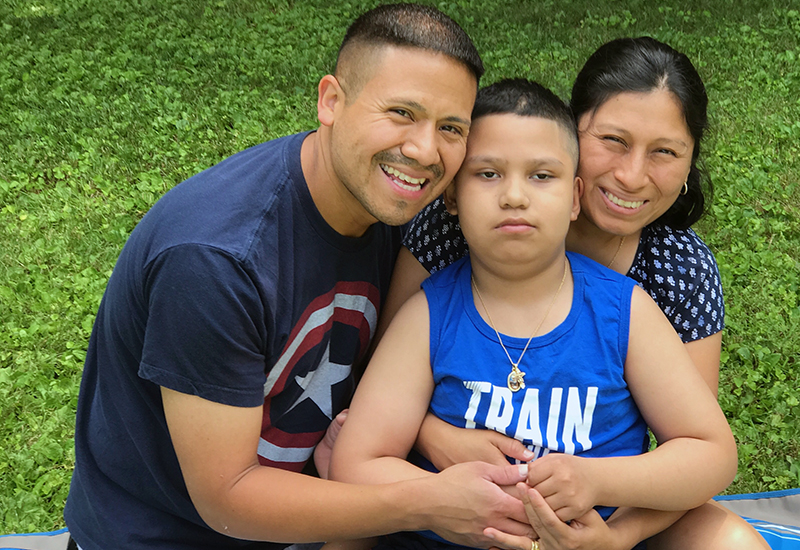
A race against adrenoleukodystrophy
It had been a month since the Rojases first heard the word “adrenoleukodystrophy.” They began to notice subtle changes in their 7-year-old son. “His smile was crooked,” remembers Paul. By October, he was in a wheelchair and no longer able to speak.
The Rojases tirelessly researched ALD, connected with doctors and families, collecting any information they could get their hands on. They sought a second opinion in Baltimore, Maryland, at the Kennedy Krieger Institute’s Moser Center for Leukodystrophies, namesake of ALD pioneer Hugo Moser, portrayed in the 1992 film “Lorenzo’s Oil.” Dr. Seyed Ali Fatemi, director of the Moser Center, examined Brandon.
“Dr. Fatemi explained there was no treatment for Brandon — he was far too advanced,” says Paul. “But he taught us how to give Brandon the best quality of life, and told us, ‘Please, let me know when you find out about Brian.’”
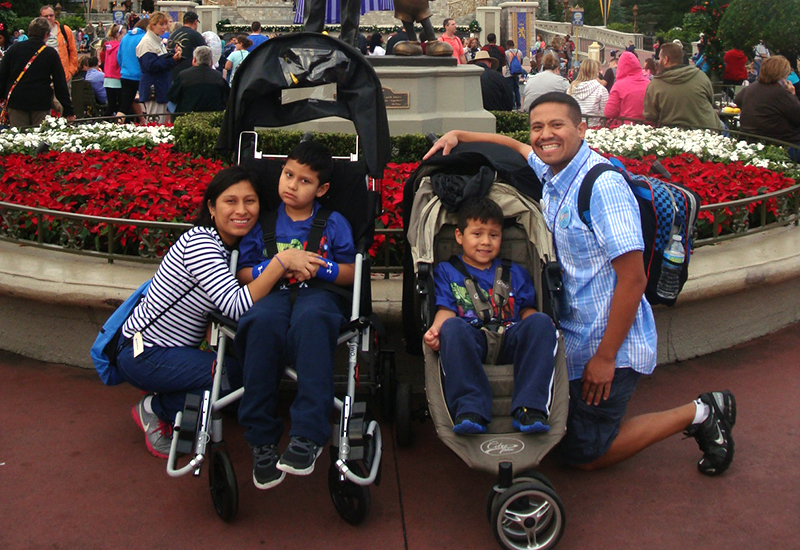
That November, on a spur-of-the-moment Disney World vacation, Brandon’s Make-a-Wish trip, the Rojases learned the terrible news. Four-year-old Brian also had ALD.
“We were on the road to one of the Disney parks, and we had to pull over,” Paul says. “We couldn’t believe it. We looked at each other, took a deep breath and said, ‘Now we have to do what’s best to save Brian.’”
Liliana remembers how difficult it was to hold herself together. “We were devastated, but we didn’t want to ruin the trip for the boys. Brandon was still able to see and feel things, so we had to manage to enjoy that moment.”
Their first phone call was to Fatemi. He told them about an ALD gene-therapy study at Dana-Farber/Boston Children’s Cancer and Blood Disorders Center, an experimental treatment for asymptomatic boys, in which their own blood cells are removed, treated with a virus carrying the gene for the ALD protein and then reinfused. The added gene would enable Brian to make the protein needed to process certain fats. Without it, the fat gradually builds up, destroying the myelin sheath, which protects nerve cells in the brain.
The Rojases would have to move quickly. Although Brian was not exhibiting any symptoms, adrenoleukodystrophy progresses rapidly.
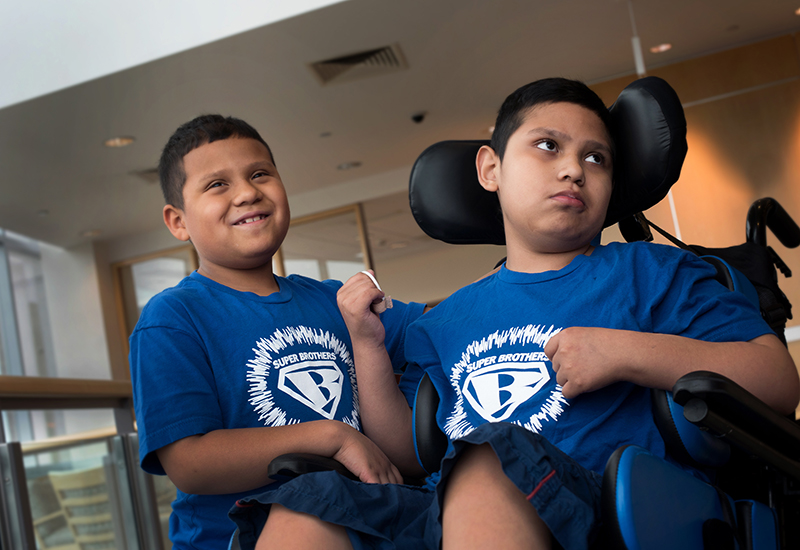
Surviving adrenoleukodystrophy
The Rojases made their first trip to Boston in January of 2015. They stayed in the city for one month, while Brian underwent prescreening tests.
In the meantime, they took a leave from their jobs — Paul, who works for the Port Chester School District in New York, and Liliana, who works at a Whole Foods Market in Connecticut. “Our employers were so understanding and so supportive,” Paul says. “We are both grateful for that every single day, and for the love and support of our local communities, family and friends.”
Much to their relief, Brian was accepted into the trial and expected back in Boston by the third week of February. By then, Brandon had a feeding tube and his motor skills were diminishing, but Paul and Liliana took turns caring for him and spending time with Brian in the hospital.
“The doctors said, ‘The younger the child, the easier it will be for them to recuperate,’” Liliana says. But still, it was difficult to watch 4-year-old Brian undergo infusions and chemotherapy to prepare him to accept the newly gene-corrected blood stem cells.
Finally, Brian received the gene therapy treatment: a single infusion that everyone hoped would prevent this disease from affecting his brain.
Back home in August, Brian prepared to start kindergarten. Remarkably, there was no sign of disease activity. And there hasn’t been since.
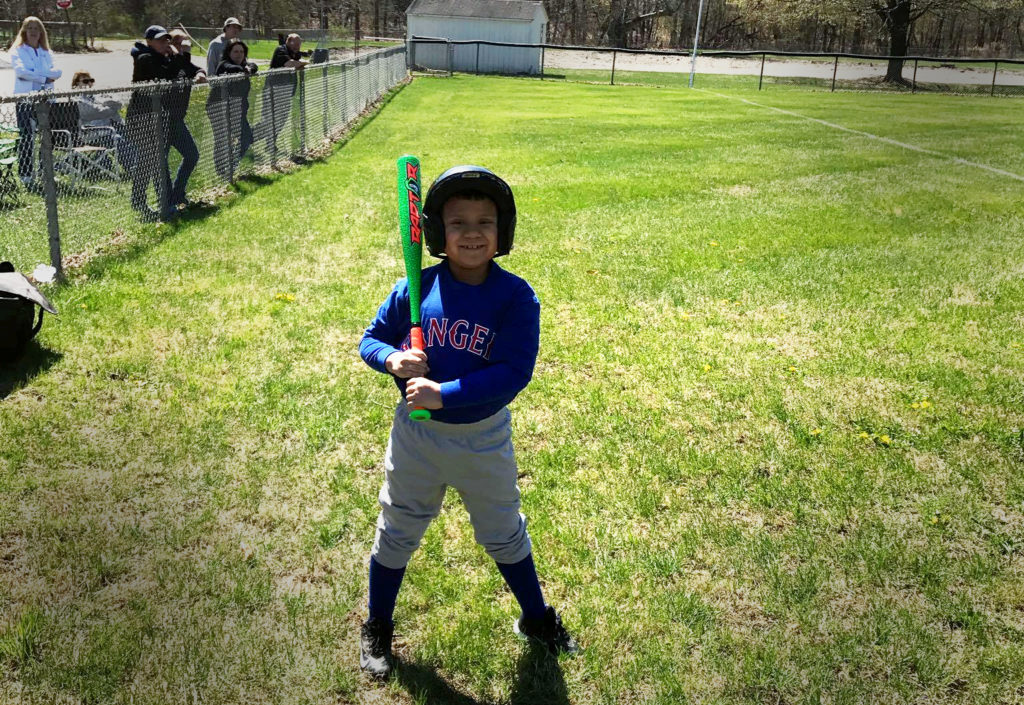
Coping with uncertainty, living with hope
The joy the Rojases feel for Brian is tempered by the sorrow they feel for Brandon.
Through Facebook, Liliana has connected with several moms who have children with adrenoleukodystrophy. “When I find out that another ALD warrior has lost his battle, it frightens me.”
So, she hugs Brandon again — and again. She tells him how much she loves him, sings and reads to him. “I feel bad because I do a lot more for Brandon than Brian, but I don’t know how much time we have left with him. I think Brian understands.”
Sometimes, Brian watches old videos of him and Brandon playing and goofing around. He says to his mom, “Oh, that was so much fun.” And he asks, “Brandon is going to get better, right Mommy?
At a recent visit to Boston Children’s, the Rojas family met Dr. David Williams — chief scientific officer of Boston Children’s Hospital and president of Dana-Farber/Boston Children’s Cancer and Blood Disorders Center — who along with other researchers, helped mastermind Brian’s treatment.
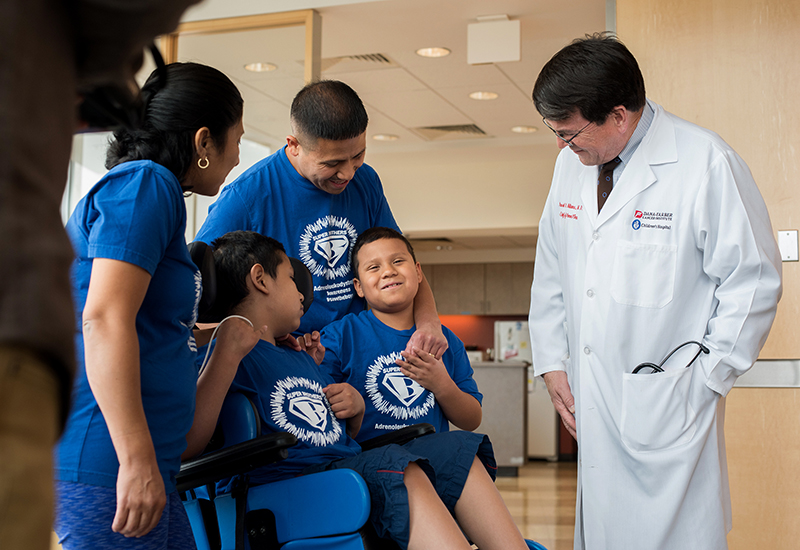
“As researchers and doctors who care for children with these devastating diseases, we cannot move the field forward without children participating in clinical trials and family support,” says Williams. “We are very pleased by the results of this new treatment and hopeful we can extend gene therapy to many more diseases in the future.”
Meeting him was a moment of sheer happiness. There were smiles, laughter, and there was hope, maybe not for Brandon, but for other boys.
“Our mission is to move forward to the day when ALD is no longer here,” Paul says.
Part of that mission is a push to add ALD to routine newborn screenings nationwide, spreading the word on a public Facebook page, Battling with Brandon.
An estimated 1 in 21,000 male newborns will test positive for ALD every year, yet only a handful of states test them at birth — a cost of only $2.50 per baby. Newborn screening, together with FDA approval of ALD gene therapy, could, finally, mean hope for families who had no hope before.
“Because we didn’t know, we didn’t have an opportunity to save Brandon,” says Paul. “This could be life changing.”
In private, Liliana admits she cries. “I cry when I see pictures of when Brandon was healthy. I ask myself, why can’t I have him back like that? Then, he gives us that smile, and I know. He is still with us.”
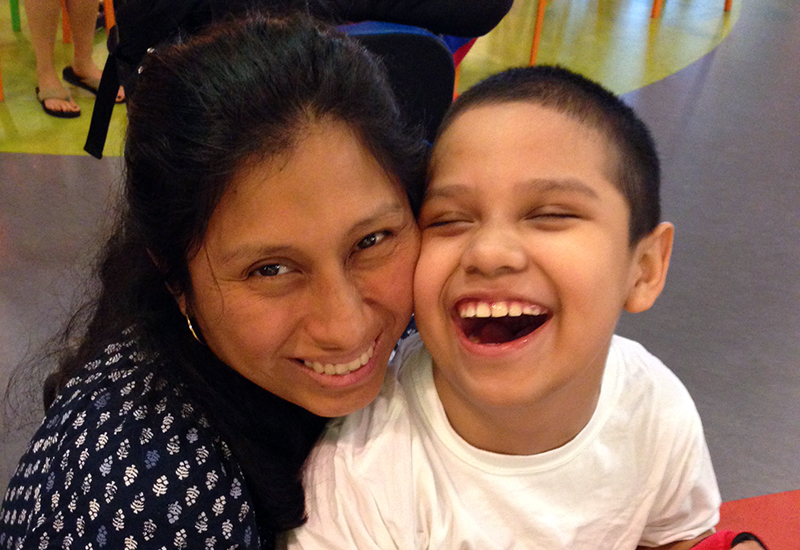
Get more information about how to enroll in the ALD gene therapy clinical trial.
Related Posts :
-

AI-enabled medical devices are burgeoning, but many haven’t been tested in children
Medical devices that incorporate artificial intelligence and machine learning are proliferating. In 2013, the FDA approved fewer than 10 such devices; by 2023, ...
-

A sickle cell first: Base editing, a new form of gene therapy, leaves Branden feeling ‘more than fine’
Though he doesn’t remember it, Branden Baptiste had his first sickle cell crisis at age 2. Through elementary school, he ...
-

A universal gene therapy for Diamond-Blackfan anemia is poised for clinical testing
Diamond-Blackfan anemia (DBA), first described at Boston Children’s Hospital in 1938, is a rare blood disorder in which the bone ...
-

Cerebral adrenoleukodystrophy: How the Cooksons dodged a devastating disease
Heather Cookson believes that if she hadn’t insisted her son Ricky get a brain MRI to investigate his frequent ...


